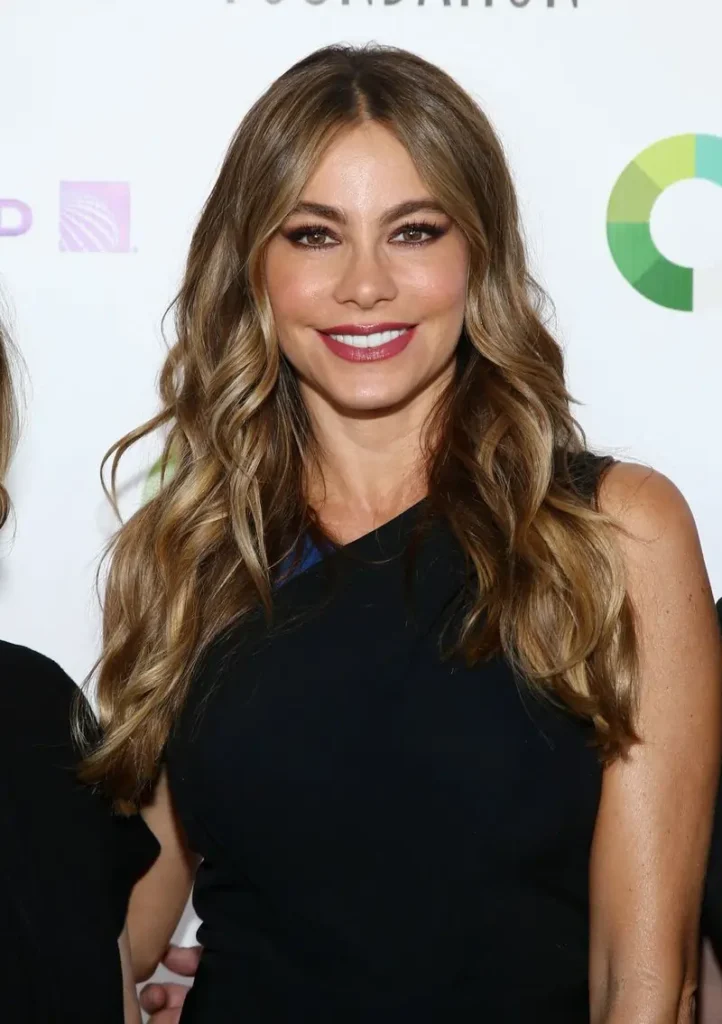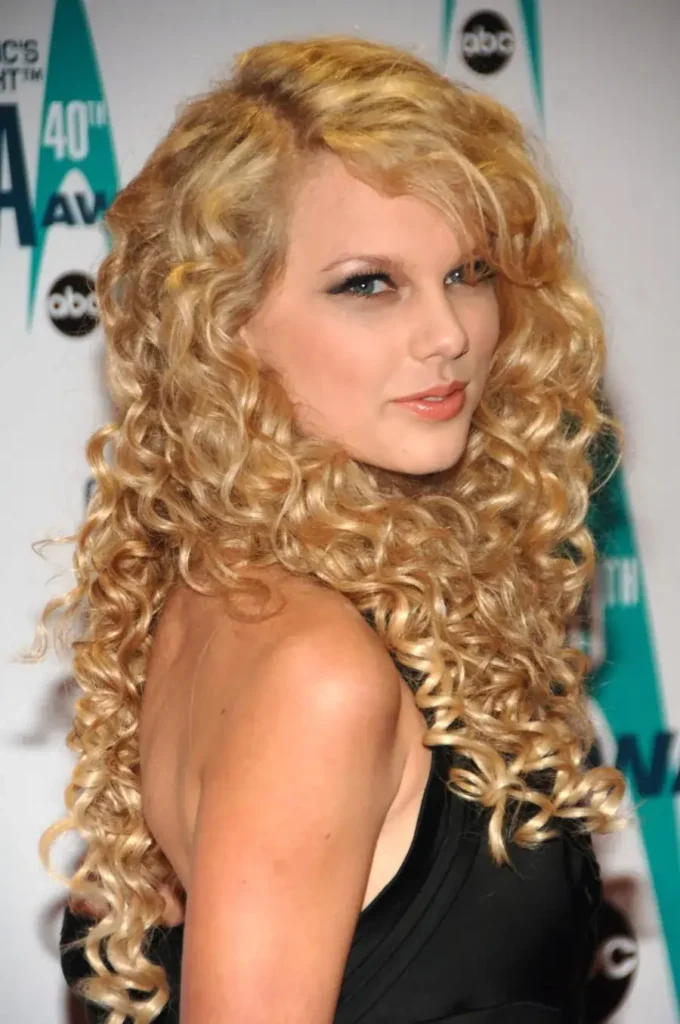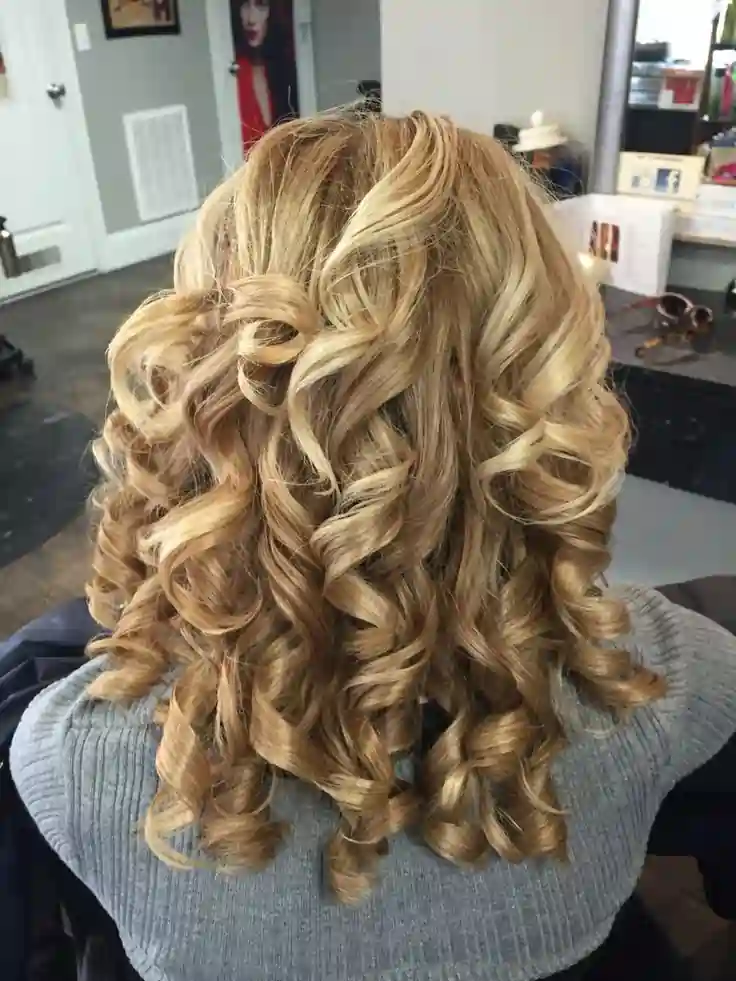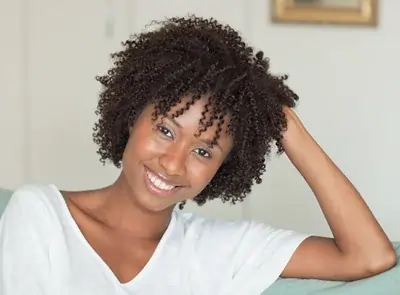
Hey curly friends! Whether you have beachy waves or tight coils, embracing your natural texture is a journey of self-love and discovery. But where do you even begin? This guide will help you unlock the secrets of your curls, from figuring out your curly hair type to creating a personalized care routine and also how to style it.
The Curly Girl Method (CGM) categorizes types of curly hair based on a number (texture) and letter (curl definition). Explore essential CGM practices like co-washing, product recommendations for different curl types, and styling techniques for long-lasting definition and frizz-free curls.

Straight hair, also known as Type 1 hair according to the Curly Girl Method, is characterized by its lack of any natural curl or wave pattern. It falls straight from the scalp to the ends without any bends or kinks.

Type 2 hair, also known as wavy hair, sits comfortably between straight and curly hair, boasting beautiful, S-shaped waves. This category is further divided into three subcategories (A, B, and C) based on the tightness and definition of the waves.
Also Read: Reasons Why Justin Bieber Still Has Selena’s Tattoo

2A hair boasts beautiful, large, loose waves that often start below the mid-shaft and become more defined towards the ends. While they might not be as tightly coiled as other curl types, 2A waves still crave moisture and definition to prevent frizz and enhance their natural bounce.

Type 2B hair boasts beautiful, well-defined S-shaped waves that start mid-shaft or lower and become more pronounced towards the ends. While they have more natural definition than their 2A counterparts, they still battle frizz and maintain that wave shape throughout the day.

2C hair boasts the tightest waves of the wavy category. Think of well-defined S-shaped waves with some strands forming loose corkscrews. These waves start near the roots and extend throughout the hair.
You may also know: Taylor Swift’s Height, Age, and Dating History

Type 3 hair, also known as curly hair, features well-defined curls that range from loose spirals to tight coils. This category is further divided into three subcategories (A, B, and C) based on the tightness and circumference of the curl.

Type 3A hair boasts beautiful, large, bouncy curls that resemble loose spirals. These curls often start mid-shaft or lower and have an “S” or “O” shape.
Challenges: Frizz and maintaining curl definition can be concerns.
Shampoo: Gentle, sulfate-free formulas and 1-2 times a week. Consider glycerin, aloe vera, shea butter, and coconut oil-containing shampoo.
Conditioner: Lightweight to medium-weight hydrating conditioners are your best bet. Look for ingredients like shea butter, mango butter, or coconut milk.
Styling (After washing and conditioning): Apply a pea-sized amount to damp hair, scrunching upwards to encourage curl definition. Diffusing on low heat and low speed is a great way to dry your curls without disrupting their shape and minimizing frizz.

3B hair boasts beautiful, defined, springy curls with a smaller circumference than 3A curls. They resemble corkscrews and often have a tight “S” shape throughout the hair, starting near the roots. These curls add tons of volume and texture to your hairstyle.
Challenges: Dryness, frizz, and breakage are common concerns for 3B hair.
Shampoo: Moisturizing, sulfate-free formulas 1-2 times a week and that contains shea butter, coconut oil, or avocado oil.
Conditioner: Aim for deep conditioning at least once a week, or even more frequently depending on your hair’s needs.
Styling: Generously apply leave-in conditioners, butter, or creams to soaking wet hair. Techniques like plopping (wrapping in a t-shirt) for 10-15 minutes can enhance curl definition and reduce frizz. Bantu knots, twists, or braid-outs are also excellent options for 3B hair, defining your curls while preventing frizz and breakage.

Type 3C hair boasts the tightest curls of the curly category, with highly defined coils resembling springs or zig-zags. These tiny, dense coils often start near the roots and have a very small circumference.
Challenges: Dryness and lack of moisture retention contribute to frizz.
Shampoo: Super-hydrating, sulfate-free formulas aim for cleansing 1-2 times a week. Consider shampoo that contains ingredients like shea butter, avocado oil, or mango butter.
Conditioner: Deep condition at least once a week, or even more frequently if your hair feels dry.
Styling: Styles like Bantu knots, twists, or braid-outs are excellent for defining your curls.

Type 4 hair, also known as coily hair, is characterized by its incredibly tight coils and dense texture. It’s the curliest hair type on the spectrum, with very little to no definition between root and curl. This category is further broken down into three subcategories (A, B, and C) based on the specific coil pattern and characteristics.

Type 4A hair features incredibly fine, wiry coils that are tightly packed together. These coils often have a very small circumference and a delicate texture, ranging from super soft to slightly coarse.
Challenges: Fine strands are more prone to breakage, especially if not handled with care.
Shampoo: Look for gentle, sulfate-free formulas with moisturizing ingredients like coconut milk, aloe vera, or shea butter.
Conditioner: Rich, creamy conditioners are essential. Look for ingredients like shea butter, avocado oil, or mango butter.
Styling: Techniques like finger coiling or braid-outs can help define individual coils and minimize shrinkage.
You may also read: GFC Hair Treatment: Benefits, Steps, and Who It’s For

Type 4B hair boasts beautiful, defined Z-shaped coils. These coils are tighter than Type 3B curls and have a more angular, zig-zag pattern. They often appear densely packed and full of volume.
Challenges: Dryness and lack of moisture retention contribute to frizz.
Shampoo: Super-hydrating, sulfate-free formulas and cleanse bi-weekly or even less, depending on your scalp’s needs.
Conditioner: Deep condition regularly, possibly even weekly, with rich, creamy conditioners containing ingredients like shea butter, avocado oil, or mango butter.
Styling: Techniques like Bantu knots, twists, or braid-outs are excellent for defining your Z-coils, preventing frizz, and minimizing breakage.
Read More: 15 Black Girls Hairstyles Braids

Type 4C hair takes the crown for the tightest coils in the hair typing system. These dense, spring-like coils are incredibly tiny and often start right at the root. 4C hair is known for its incredible volume and texture.
Challenges: Dryness and lack of moisture retention contribute to significant frizz.
Shampoo: Super-hydrating, sulfate-free formulas cleanse only 1-2 times a week, or even less depending on your scalp’s needs.
Conditioner: Deep condition at least once a week, or even more frequently if your hair feels dry. Look for rich, creamy conditioners with ingredients like shea butter, avocado oil and castor oil.
Styling: Techniques like Bantu knots, twists, braids are excellent for defining your coils, preventing frizz, and minimizing breakage.
Understanding your curl type is the first step to unlocking your hair’s full potential. With the right care routine and styling techniques, you can embrace your natural texture and flaunt healthy, defined curls that turn heads. So, take a deep dive into the world of wavy, curly, and coily hair, and get ready to love your unique curls!
Read Also: Cysteine Hair Treatment Process, Benefits, and Side Effects
Here’s the breakdown based on Curly Girl Method (CGM):
Curly hair grabs everyone’s attention because its unique and eye-catching bounce makes it stand out from the crowd. It is also a great way to spark conversations and reflect your personality and creativity.